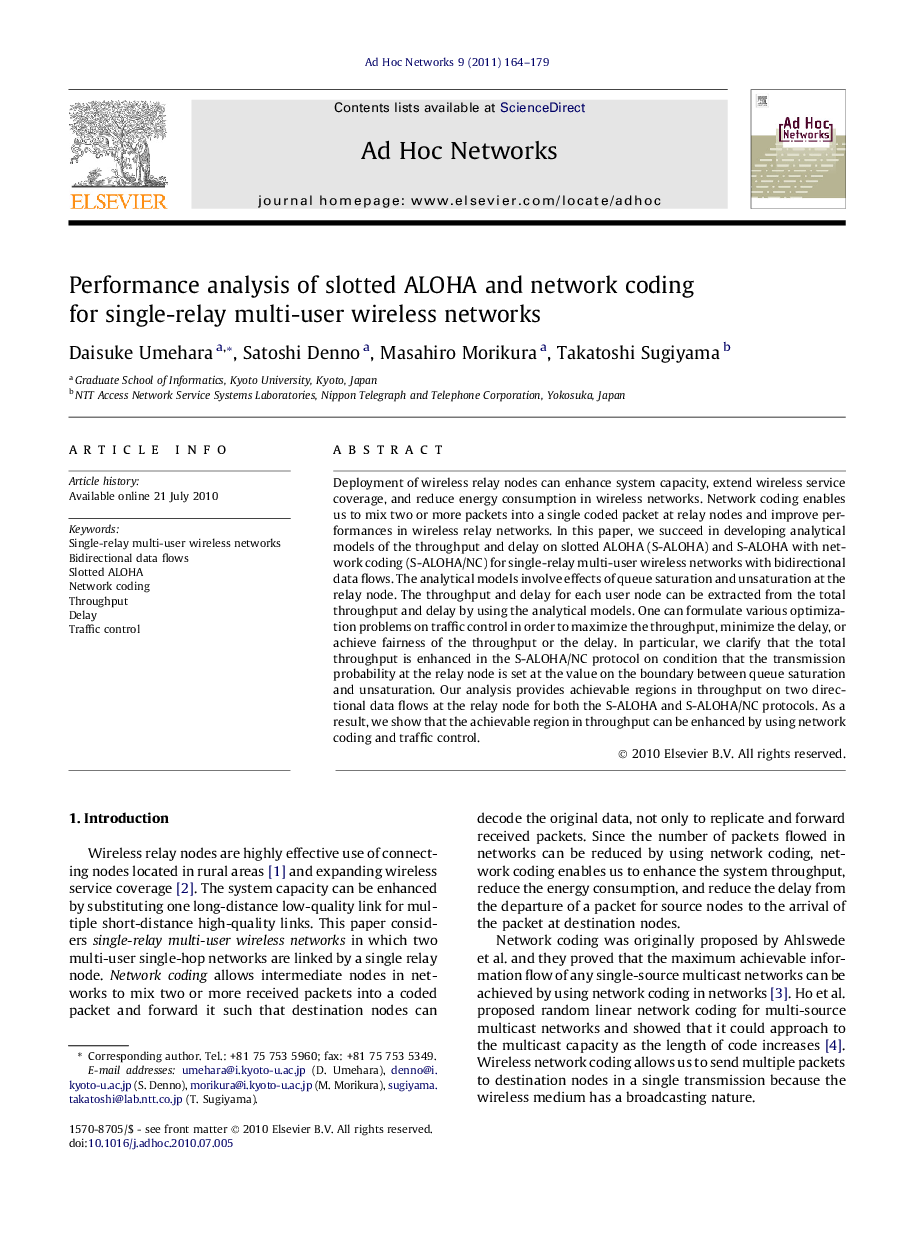| Article ID | Journal | Published Year | Pages | File Type |
|---|---|---|---|---|
| 448387 | Ad Hoc Networks | 2011 | 16 Pages |
Deployment of wireless relay nodes can enhance system capacity, extend wireless service coverage, and reduce energy consumption in wireless networks. Network coding enables us to mix two or more packets into a single coded packet at relay nodes and improve performances in wireless relay networks. In this paper, we succeed in developing analytical models of the throughput and delay on slotted ALOHA (S-ALOHA) and S-ALOHA with network coding (S-ALOHA/NC) for single-relay multi-user wireless networks with bidirectional data flows. The analytical models involve effects of queue saturation and unsaturation at the relay node. The throughput and delay for each user node can be extracted from the total throughput and delay by using the analytical models. One can formulate various optimization problems on traffic control in order to maximize the throughput, minimize the delay, or achieve fairness of the throughput or the delay. In particular, we clarify that the total throughput is enhanced in the S-ALOHA/NC protocol on condition that the transmission probability at the relay node is set at the value on the boundary between queue saturation and unsaturation. Our analysis provides achievable regions in throughput on two directional data flows at the relay node for both the S-ALOHA and S-ALOHA/NC protocols. As a result, we show that the achievable region in throughput can be enhanced by using network coding and traffic control.
